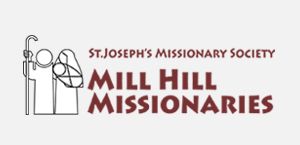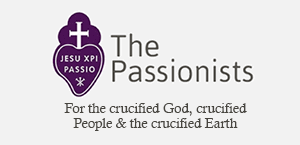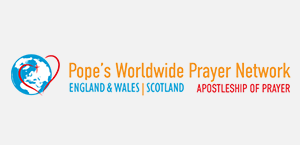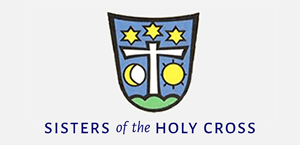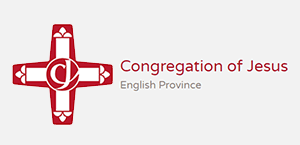Gospel in Art: Feast of the English Martyrs
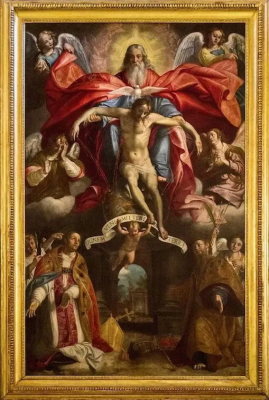
The Martyr's Picture, by Durante Alberti, 1581 © The Venerable English College, Rome
Source: Christian Art
Gospel of 4 May 2023
Reflection on the painting
Today is the Feast-day of the English Martyrs. Our painting, 'The Martyrs' Picture', was painted by Durante Alberti in 1583, just after the foundation of the Venerable English College (1579) in Rome, where the picture still hangs today.
It depicts the Blessed Trinity with two English martyrs: St Thomas of Canterbury (on the left) and St Edmund, King of East Anglia (on the right). If we look more closely at the middle vertical band we can see a burst of light behind God with a triangle-shaped halo. The equilateral triangle with its three points is a symbol for the Trinity, and more often found in late Orthodox iconography. The triangle halo is there often accompanied with a faint HO ON ("The One Who Is" ) inscription in it. Christ with outstretched arms is being held by His Father. Blood is pouring out from his wounds and is falling onto a map of the British Isles. A cherub is holding up the College motto: Ignem veni mittere in terram (I have come to bring fire to the earth).
According to tradition, students would congregate around this picture to sing the Te Deum whenever news reached the College of the martyrdom of a former student who had been executed for professing the Catholic Faith in Protestant England in the late 16th century. A total of forty-four of these alumni of the College have been declared Saints and Martyrs.
The Martyrs' Picture in the Venerable English College must be considered in the wider context of a number of decorative programmes associated with the Jesuits in the 1580s under Pope Gregory XIII (1572-85). Following the closing of the Council of Trent (1545-1563), education of new priests in diocesan and national seminaries was reformed and centralised. This was especially significant for the English and Welsh, who could no longer train new priests at home but were entirely dependent on continental institutions. In 1576, when the first Papal Visitation of Gregory XIII was made to the building, it was a hospice for pilgrims. A few years later it was established as a seminary for the formation of English and Welsh men for the priesthood, run by the Jesuits.
The martyrs we celebrate today gave their lives for bearing witness to Christ and, as in today's Gospel reading, they lived their lives 'with the Spirit of their Father speaking in them'. For most of us practising our faith today, the idea of laying down our lives for the Church is a remote concept. But the sacrifice of these martyrs, who fully embraced the ultimate sacrifice of Christ, goes far beyond any geographical boundaries or even historical limitations. Still today Christians around the world are prepared to die for their faith. These are the quiet, modern martyrs who away from any cameras or press give incredible witness to their faith. When Pope Paul VI gave his homily in 1970 at the Canonisation of the English Martyrs, he quoted Tertullian:
'The blood of Christians is the seed that is sown as it was with the shedding of Christ's own blood, so it is with the sacrificial offering of her Martyrs in union with His: a source of life and of spiritual fecundity for the Church and the entire world.'
LINKS
Gospel in Art: https://christian.art/
Today's reflection: https://christian.art/daily-gospel-reading/matthew-10-17-20-2023/









